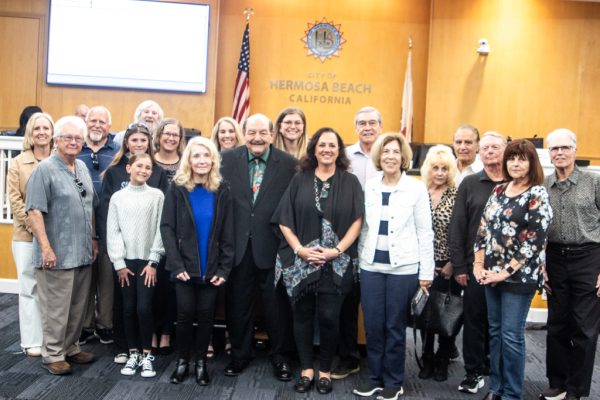The U.S. Environmental Protection Agency has recognized the city’s cutting-edge Strand Infiltration Trench Project under the beach sand with a 2010 Performance and Innovation in the State Revolving Fund Creating Environmental Success Award.
The ceremony in Sacramento last week marked a second honor for the project. Late last year the trench received a 2010 B.E.S.T. Project of the Year Award from the Southern California Chapter of the American Public Works Association.
“We are pleased and gratified to have this recognition of the hard work and innovative efforts of our public works departments and the team responsible for the Strand Infiltration Trench Project,” Mayor Pete Tucker said. “This project exemplifies the city’s commitment to making Hermosa Beach a greener place to live, work and play.”
The beach trench, completed in April 2010, lies three feet under the sand and runs from the city pier 1,000 feet south, parallel to the Strand wall, ending at Eighth Street. It is designed to collect urban storm-water runoff – a leading cause of ocean pollution – from a huge storm drain at Pier Avenue and filter down through the beach sand instead of spilling into the blue Pacific.
The storm-water runoff, which begins collecting in inland cities and pours through drainpipes to the beach, is dammed from entering the Pier Avenue drain pipe and diverted into an underground well at the base of the pier.
There, it is filtered for gross contaminants and then pumped into the trench, which is made of interlocking plastic boxes, like milk crates, with fabric wound around them to let the water filter downward into the beach sand, which provides further filtering. Bacteria decompose as the water makes its way farther down to the groundwater table and out to sea.
The trench design is so cutting-edge that officials could find only one similar storm drain project nationwide, a filtration trench in the sand dunes of North Carolina that has not yet yielded enough data to fully gauge its usefulness.
Funding for the project came from a number of sources. California’s Proposition 50 Clean Beaches Initiative paid for planning and pre-construction work. The Los Angeles County Flood Control District funded design of the project, and construction and monitoring was funded by the EPA with federal stimulus money. ER










